The convention of describing skin disorders in terms of certain reaction patterns is inexact and there is often a great deal of overlap. For example, the blistering acute eruption of poison ivy can be described as both a vesicobullous as well as an acute eczematous reaction pattern. However, using these patterns to describe individual skin lesions or eruptions often helps greatly in formulating a differential diagnosis.
A papulosquamous reaction pattern refers to an eruption in which the primary lesions consist of macules, papules, or plaques with scale. Thus, a papulosquamous reaction pattern suggests a differential diagnosis that includes psoriasis, tinea corporis, tinea versicolor, lichen planus, parapsoriasis, mycosis fungoides, and pityriasis rosea.
Eczematous reaction patterns are a little more difficult than papulosquamous patterns to describe (see Chapters 4 and 13), because they often have various presentations and, at times, may be impossible to distinguish from papulosquamous patterns.
Acute and subacute eczema. Examples include erythematous “juicy” papules or plaques and/or weeping vesicobullous lesions. A classic example is poison ivy.
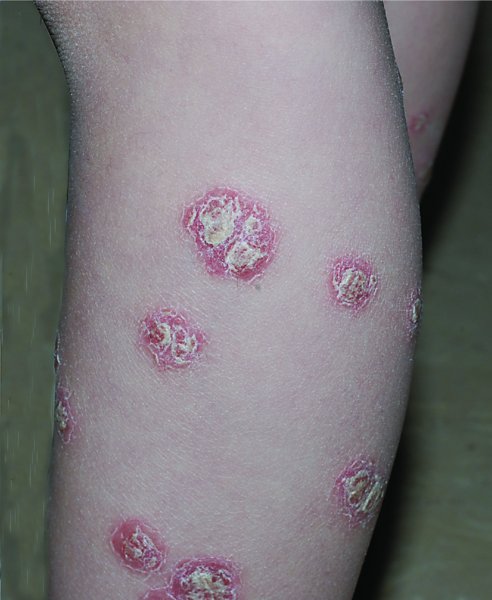 Papulosquamous reaction pattern.
Papulosquamous reaction pattern.
 Papulosquamous reaction pattern.
Papulosquamous reaction pattern.
 Acute eczematous reaction pattern.
Acute eczematous reaction pattern.
 Chronic eczematous reaction pattern.
Chronic eczematous reaction pattern.
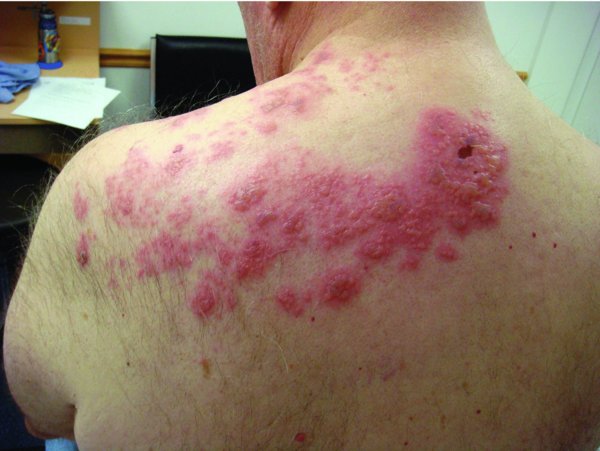 Vesicobullous reaction pattern.
Vesicobullous reaction pattern.
 Dermal reaction pattern.
Dermal reaction pattern.
Chronic eczema. The hallmark lesion of chronic eczematous dermatitis is lichenification, which is caused by repeated scratching and/or rubbing. Typical examples are long-standing atopic dermatitis and lichen simplex chronicus.
The vesicobullous reaction pattern consists of fluid-filled blisters.
Examples: second-degree burns, primary bullous disorders, varicella, herpes simplex and herpes zoster infections.
In a dermal reaction pattern the lesions or eruptions are confined to the dermis. There is generally an absence of scale or changes in the epidermis.
Examples: cutaneous sarcoidosis, depositional processes involving uric acid (gouty tophi), or lipids (eruptive xanthomas) and granuloma annulare.
A subcutaneous reaction pattern is characterized by lesions or eruptions that are confined to subcutaneous tissue. There may or may not be an elevation of the skin and in general there is an absence of scale or epidermal change.
Examples: erythema nodosum and lipomas.
A vascular reaction pattern refers to erythema or edema resulting from changes in the vasculature, such as vasodilatation, purpura, or vasculitis.
Examples: first-degree burns, viral exanthem, urticaria, erythema multiforme, vasculitis, and drug rashes.
 Subcutaneous reaction pattern.
Subcutaneous reaction pattern. Vascular reaction pattern.
Vascular reaction pattern.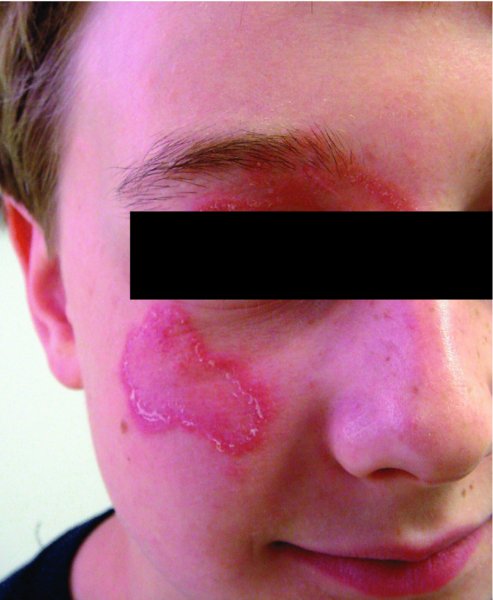 Annular lesion.
Annular lesion.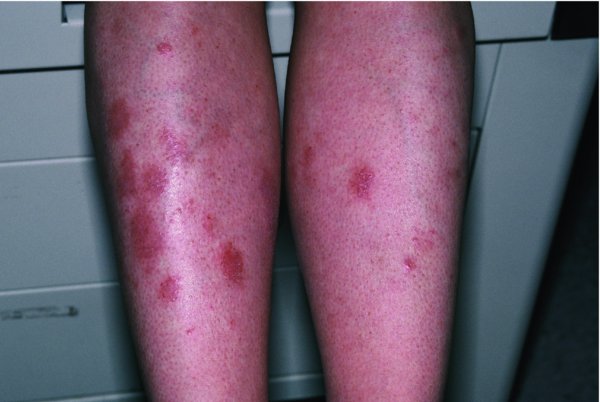 Nummular lesions.
Nummular lesions.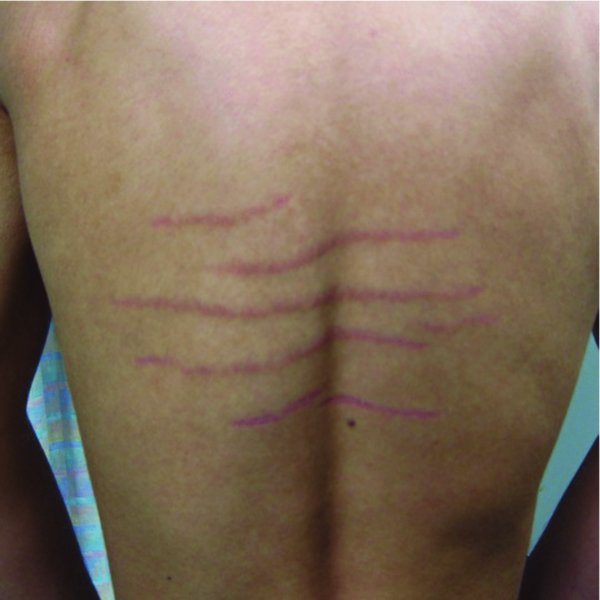 Linear lesion.
Linear lesion.